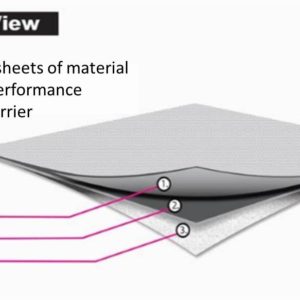Office drop ceilings are extremely common in the workplace. From large call centers to modern design firms, the majority of workspaces have built-in acoustical ceilings, or drop ceilings, which oftentimes lead to acoustical noise issues. If you’ve ever worked in this type of environment, you understand how easy it is to become distracted by the conversations of others or to have your own conversation overheard.
RELATED: Consider using Commercial Office Sound Masking Systems to treat Your Noisy Office
Reduce Noise in the Office
Creating a quiet office is a key to better work performance and improving the well-being and stress level of employees. According to U.S. General Services Administration “Acoustical comfort is achieved when the workplace provides appropriate acoustical support for interaction, confidentiality, and concentrative work.” One of the primary flanking paths we see is when the office wall does not extend to the true slab above, and the sound simply travels up through ACT (Acoustical Ceiling Tiles) and over the drywall, and then back down on the other side.
To prevent this flanking, you need to either extend the wall up, or add a sound-blocking membrane on top of the ceiling tile, such as our patented DropCeiling Blokker. This product increases the absorption of the drop ceiling, while also adding a mass-loaded barrier that reflects sound back downward.
If you are budget-conscious, then simply adding 3/8″ drywall cutouts will block additional noise, but without the absorption characteristics, the reverberation in the space below may suffer. This is much more effective than simply laying fiberglass batting over the ceiling tiles. Remember that fiberglass batt is not rated for STC, but rather has R-ratings, which measures amount of thermal insulation.
Regardless of which option you choose, knowing the flanking path is the first step toward a solution. Find if the sound is traveling up and over the partitions through ceiling tiles, or directly through thin walls. When unsure, you may consider hiring an Acoustic Consultant to perform a leak test and determine the path of least resistance.



